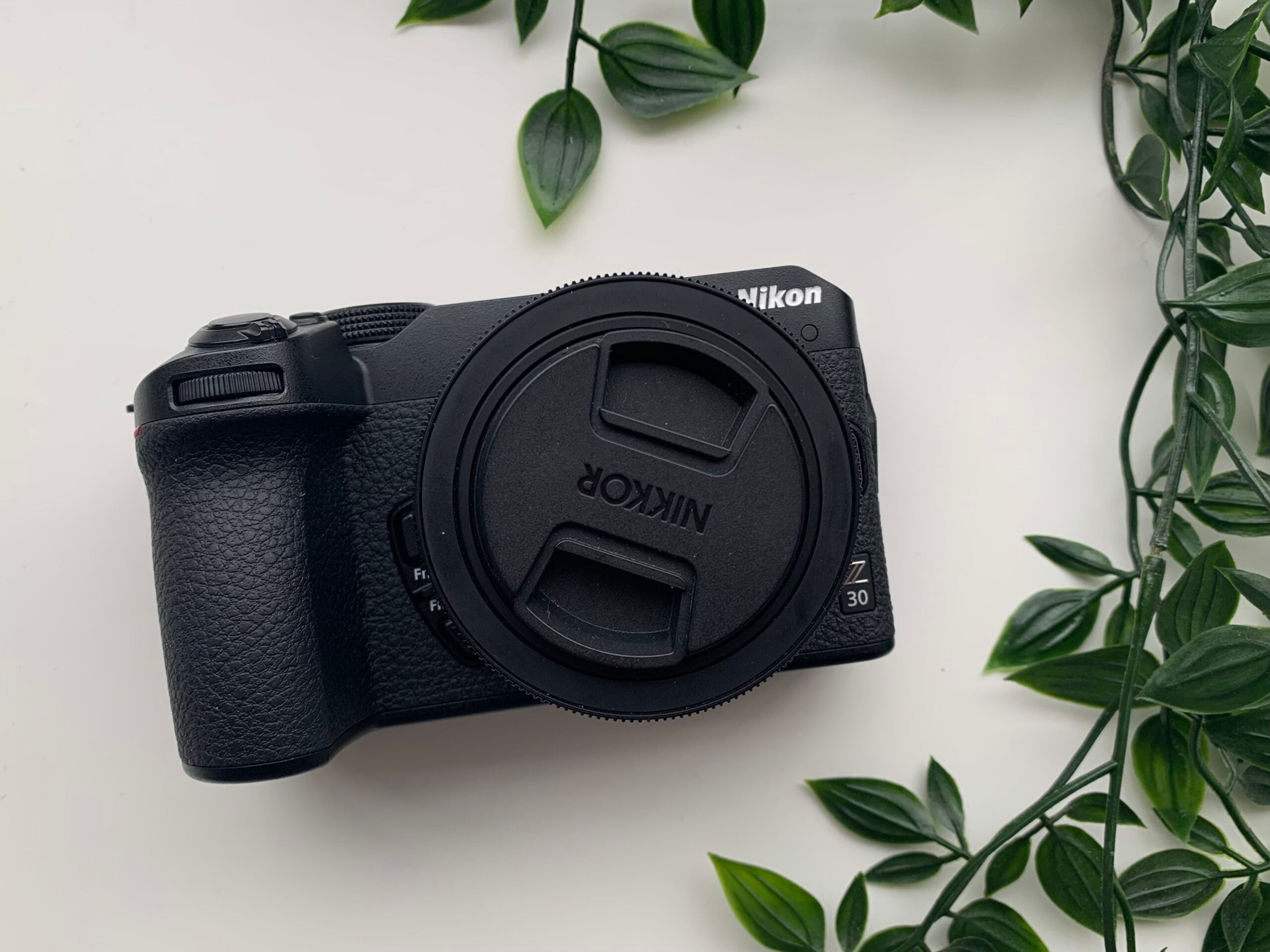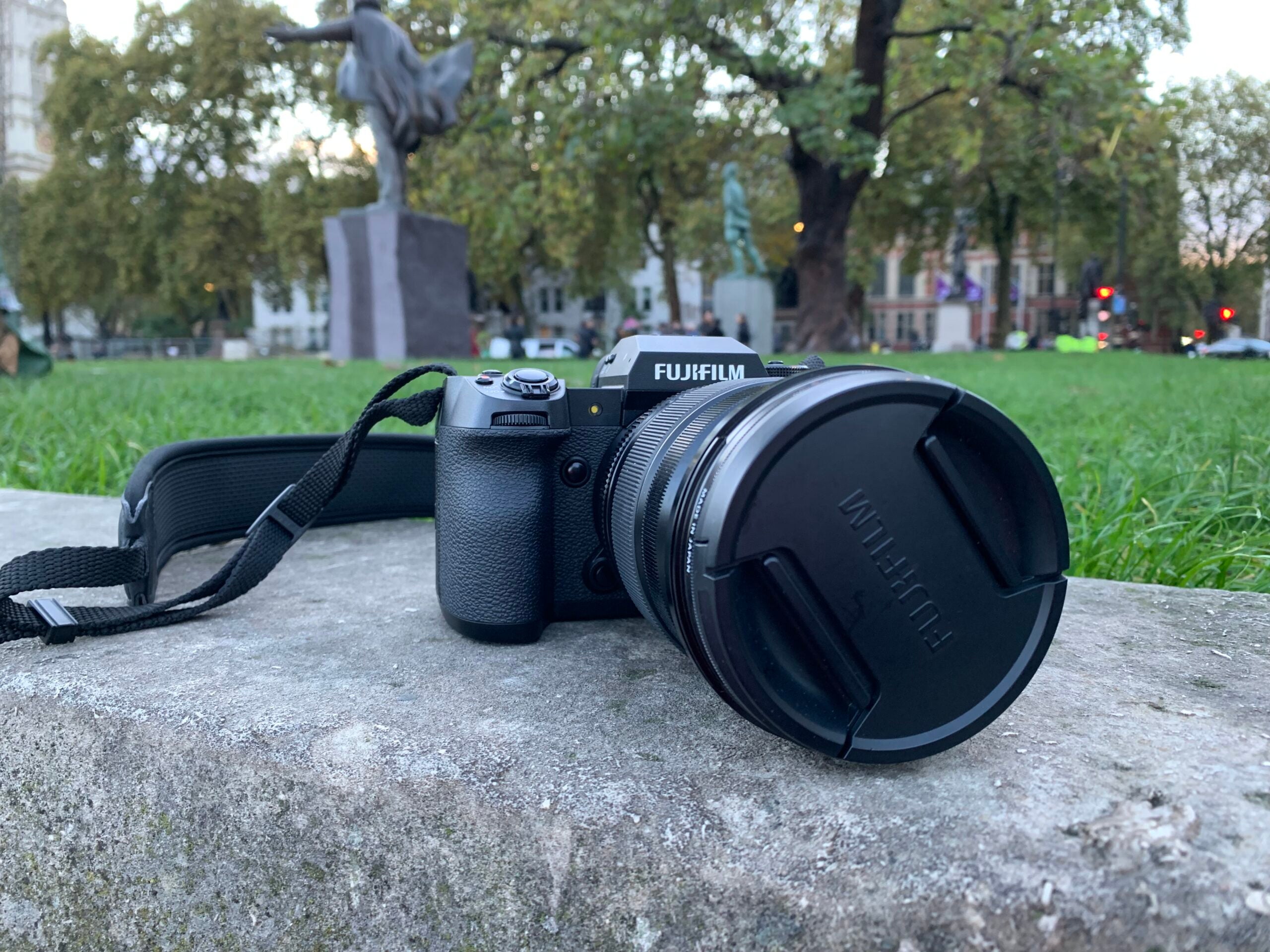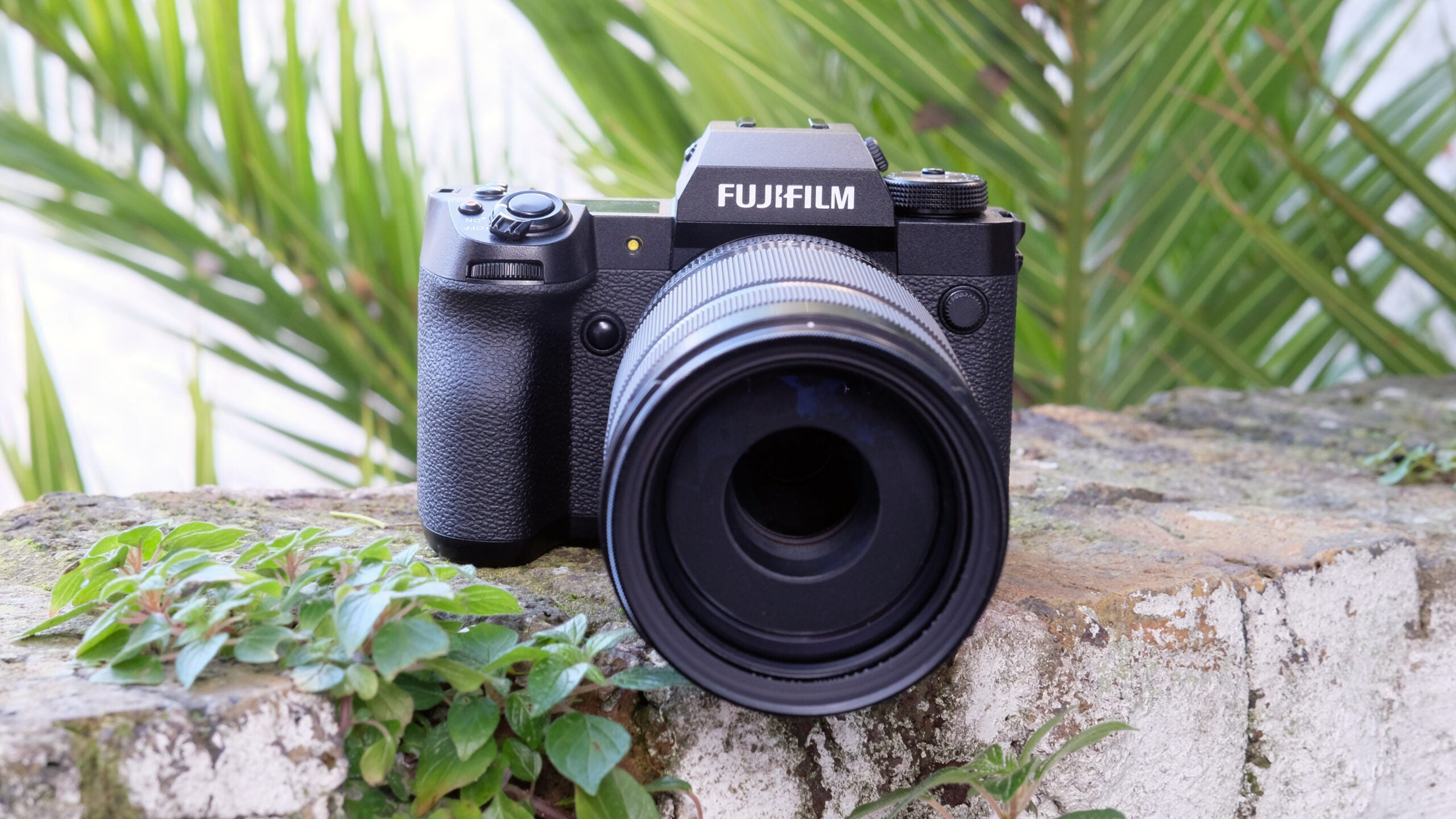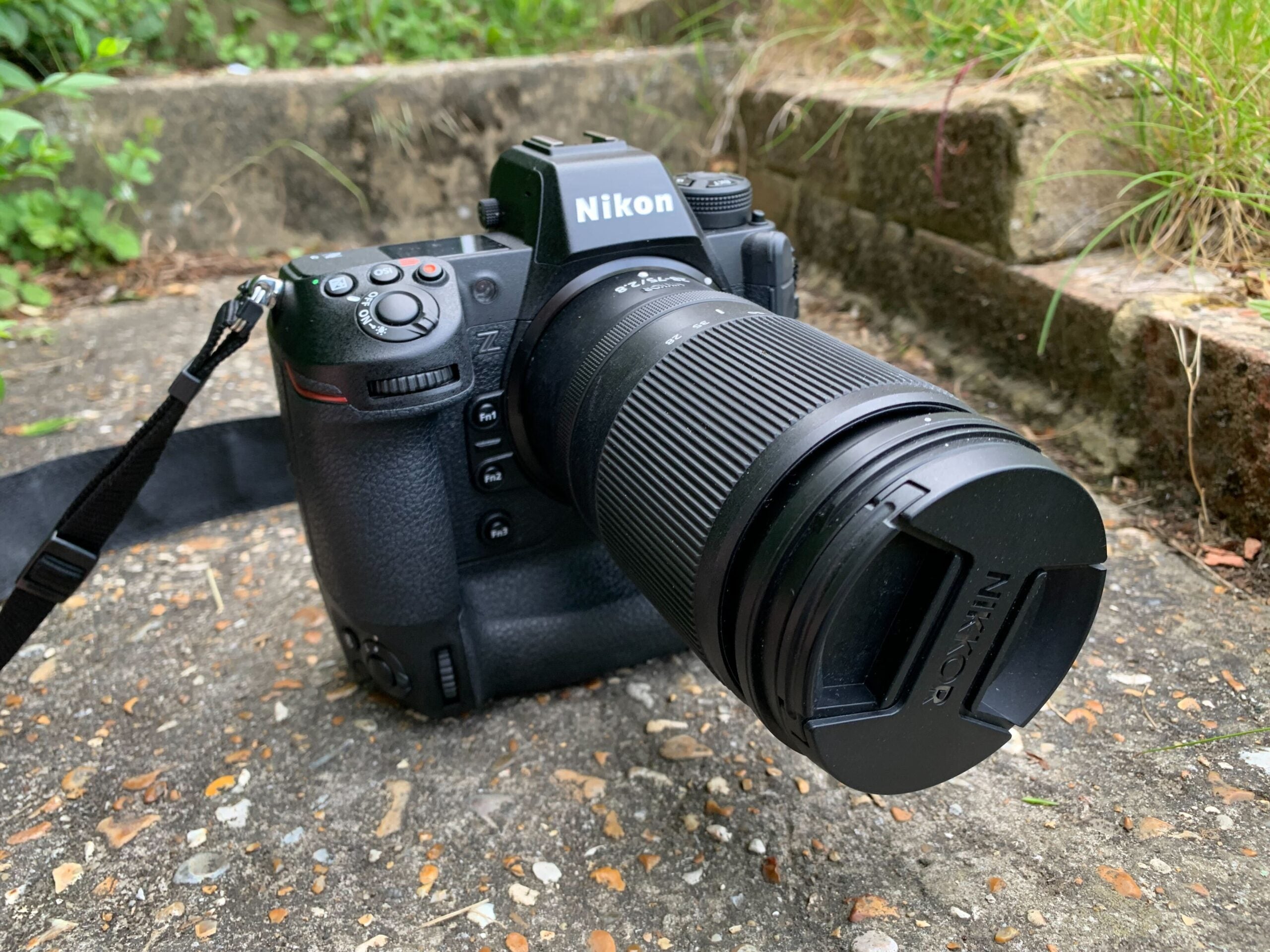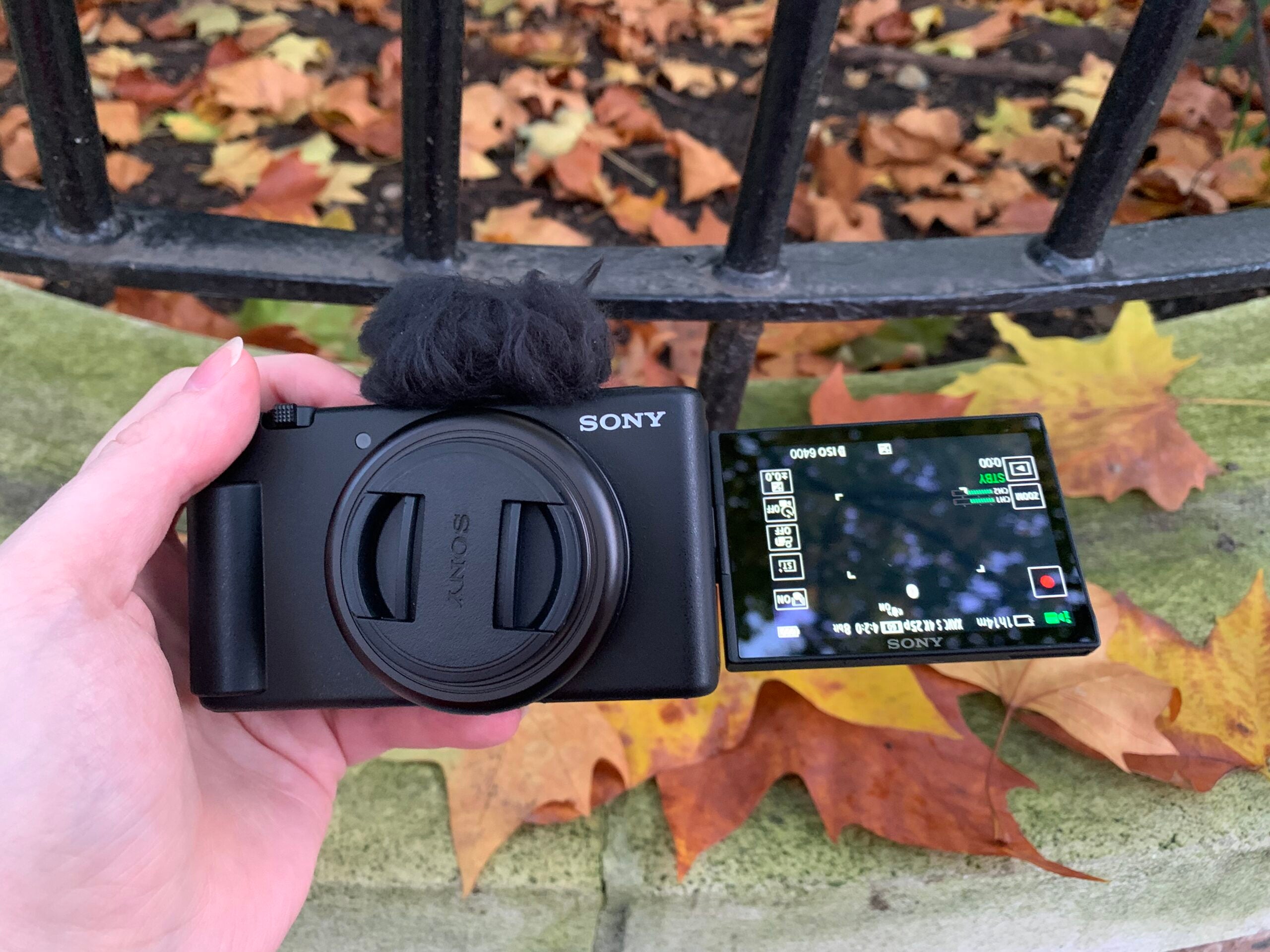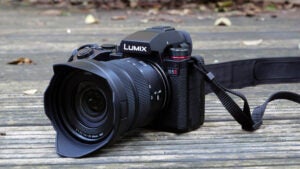
Possibly Panasonic’s most widely appealing full-frame camera to date, the Lumix 5II irons out almost all of the S5’s issues while improving performance and image quality – all for a price that puts it within the reach of young and aspiring content creators.
Pros
- Huge range of video options
- Superb stabilisation
- Much improved autofocus
Cons
- Cables can block the screen
- No tally lights
Availability
- UKRRP: £1999
- USARRP: $1999
- EuropeRRP: €2199
Key Features
-
24.2-megapixel CMOS sensorNewly developed full-frame sensor and processor -
Phase hybrid AFNew contrast- and phase-detection autofocus system -
Active I.S.Improved in-body stabilisation performance -
Heat management systemBuilt-in cooling fan allows unlimited recording times
Introduction
While brands like Sony, Canon, Fujifilm and Nikon have switched to hybrid and phase detection autofocus systems, Panasonic’s mirrorless cameras have stubbornly stuck with the brand’s contrast-based Depth-from-Defocus setup – a choice which has, in my eyes, held them back slightly. DFD seems a little bit slower and less accurate than a phase detection system.
That all changes with this camera. The Panasonic Lumix S5II is the brand’s first to adopt phase detection AF, which it marries with DFD into a hybrid system similar to those used by competitors – a development that feels significant.
This camera is notable for much more besides that, though. An updated, upgraded spin on the impressive S5 (which will remain part of Panasonic’s S series line-up for now), the S5II sports a new full-frame sensor, a new processor, upgraded image stabilisation and an integrated heat management system that enables unlimited 6K and 4K video recording.
At the price, it seems like a great deal, particularly for content creators who need a camera that can handle both high-quality video and photos. Let’s dive in and find out if that’s actually the case.
Design and handling
- Tough and weatherproof magnesium alloy construction
- Cooling system results in some additional bulk compared to S5
- Generally lightweight and compact, but larger lenses will add significant weight
The S5II has a familiar DSLR-style body, with a large hand grip on the right-hand side and a bump in the middle of the top plate housing the viewfinder and hot shoe.
This bump is a bit taller than that on the S5, because that’s where Panasonic has located the aforementioned fan and its intake and outlet vents. It also adds a little heft: the body weighs 740g to the S5’s 714g.
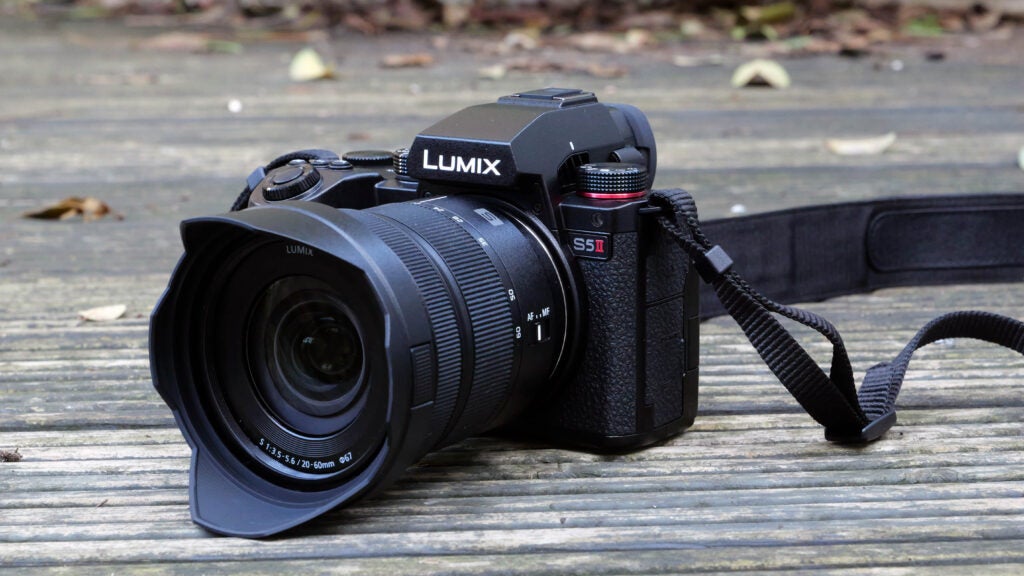
Even so, the S5II is relatively lightweight and compact for a full-frame model. The body is constructed from tough magnesium alloy rather than plastic, with weather-sealing on the ports and joins to keep out dust and water, and wrapped in a grippy textured material to aid purchase.
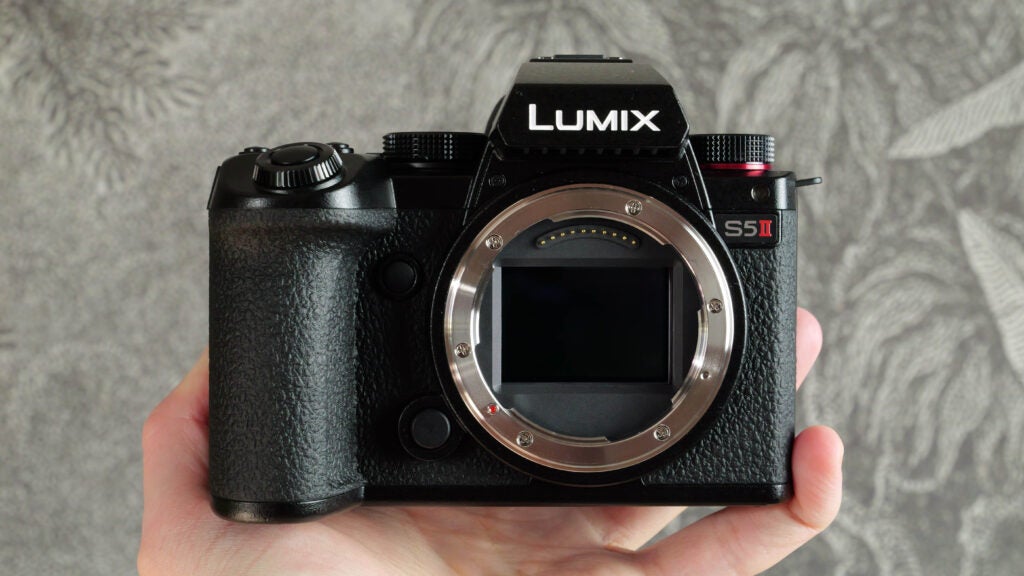
It feels comfortable and secure in the hand, and I found the control setup to be well-positioned and labelled. Even those unfamiliar with Panasonic S series cameras should have few issues getting to grips with the placement of the dials and buttons here. You can use the rear touchscreen to adjust settings and set AF points.
A larger video stop/start button on the top plate would be nice (although you can use the shutter button for this when the camera is set to video mode), as well as one on the front, but overall I have no major complaints – save for the lack of tally lamps on the front and back. These are really handy for video users, as they give at-a-glance confirmation that the camera is currently recording, so their absence in such a video-centric camera feels odd.
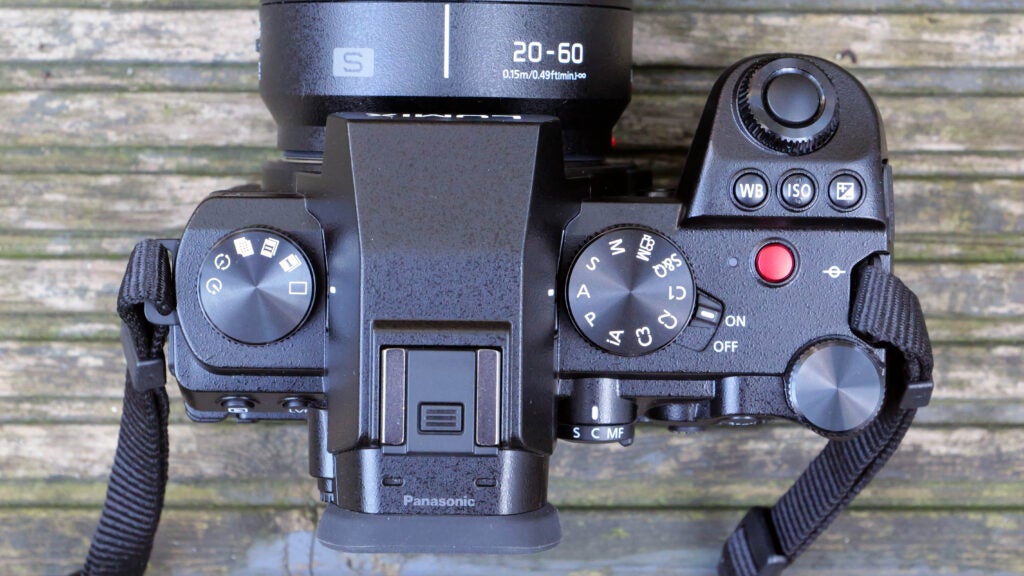
Viewfinder and screen
- New 3.68-million dot OLED viewfinder
- Fully articulated 3-inch touchscreen
- Connections can block view of screen
The Lumix S5II sports a brand new 0.78x magnification OLED viewfinder that, with 3.68 million dots, beats the S5’s 2.36-million dot EVF. It’s beautifully crisp and detailed, with its high contrast and fast refresh rate giving it almost the feel of an optical viewfinder. I ended up using it a lot, not only for still photography but when recording video too, as it afforded such a clear view of whatever I was shooting.
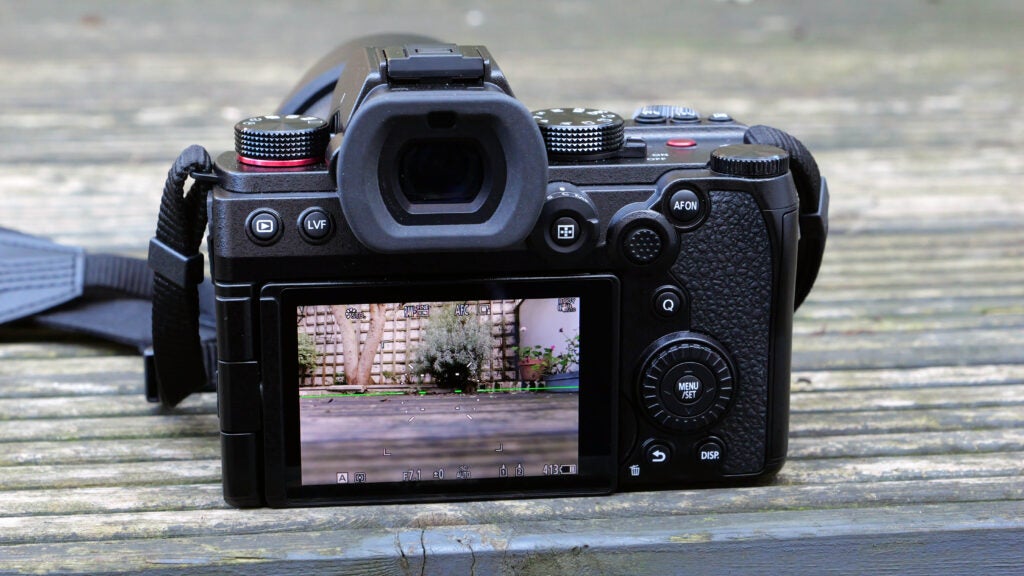
The 3-inch, 1.84-million dot screen isn’t at all bad either, with a vari-angle design that allows it to be faced in almost any direction, including fully frontwards. When arranged like this, however, it can be largely blocked by any HDMI, USB-C, headphone or mic cables that may be currently connected, which could become really annoying for frequent self-shooters (unless they buy an Atomos Ninja external monitor or similar).
The screen offers a range of touch controls, including the ability to tap to change settings or set an autofocus point. While I didn’t find myself using this function too often, other users will doubtless prefer it to using the physical controls.
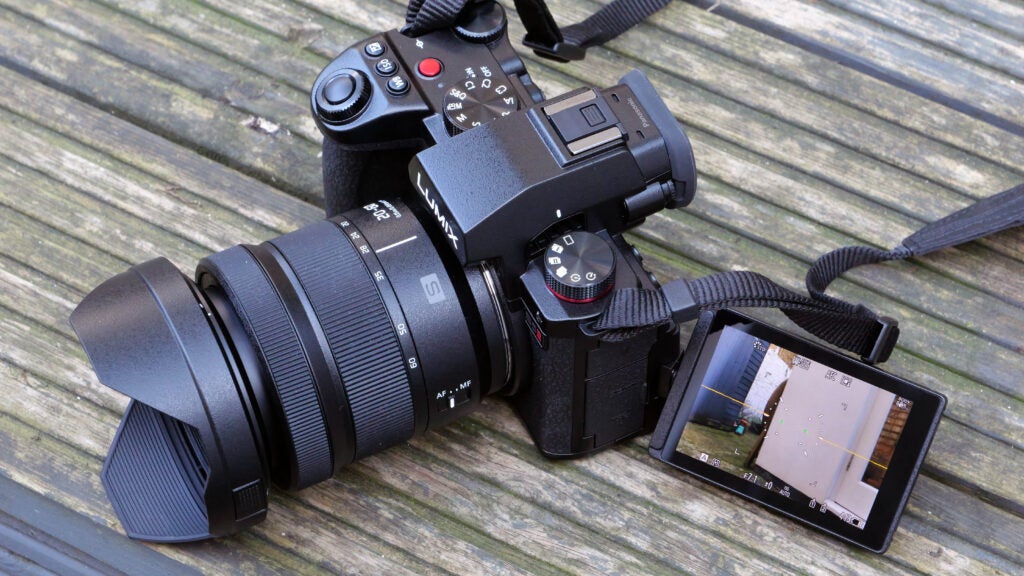
Features and performance
- Full-size HDMI and two SDXC card slots
- Active I.S. in-body stabilisation
- Up to 30fps burst photo shooting
The S5II is packed with features that make a photographer or videographer’s life easier, the two most notable of which being excellent in-body image stabilisation and the all-new phase hybrid autofocus setup.
The former comes with a new ‘Active I.S.’ mode that leverages the power of the new processing engine to further boost stability during handheld image capture. I noticed that it can totally eliminate small movements, and vastly reduce sway when walking – a huge deal for shooters who want to capture smooth video without attaching the S5II to a gimbal. A gimbal is still superior, of course, but this is about as good as image stabilisation currently gets when using the camera on its own.
The revamped autofocus might not be quite as lightning fast as the more mature hybrid systems used by Sony and Canon, but it’s a marked improvement on previous Panasonic cameras, and very capable of tracking moving subjects – particularly if they’re eyes, faces or shaped like a human or animal. In the future it’d be nice to see birds, vehicles and more added to the list of recognisable subjects, but the S5II does a great job of finding, locking onto and maintaining focus on the subjects it can identify.
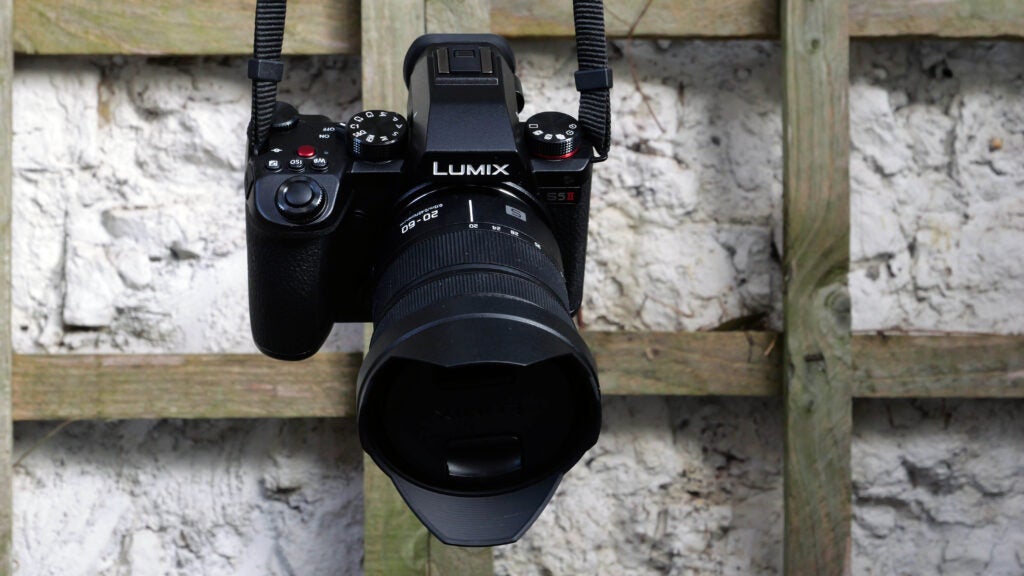
Shooting speed is also quite quick: up to 9fps continuous using the mechanical shutter, and up to 30fps with the electronic shutter. Paired with the upgraded autofocus capabilities, this makes the S5II a solid choice for successfully capturing stills of fast-moving objects and fleeting moments.
Connectivity is a strong point too, thanks to a full-size HDMI port, dedicated 3.5mm headphone and microphone sockets and a USB-C port that can be used for recharging and constant power supply.
On-board storage comes courtesy of two SD card slots, able to utilise media up to SDXC UHS-II. One might have expected to see the faster, more robust CFexpress Type A cards here, as they’ve featured in Panasonic’s recent Lumix GH6, but UHS-II seems to be more than adequate for the S5II’s data demands.
Power demands are quite heavy, however, which means you might not get as much use out of one battery here as you would on the original S5. From my time with the S5II, I reckon a full day of shooting will require two or three batteries in total, but the aforementioned USB-C power supply means you can turn to a power bank or similar as a means of keeping the camera running for longer.
Speaking of longer, the new cooling system appears to work as intended. I didn’t have issues with overheating curtailing 4K clips, albeit while reviewing the S5II during the British winter when outdoor temperatures were around 5 to 10ºC.
Panasonic says anything below 40ºC counts as ‘normal’ operating temperatures, however, and says that as long as you keep the camera within normal parameters you should be able to record continuous 4K footage until storage fills up. 6K recording is limited to 30 minutes, however.
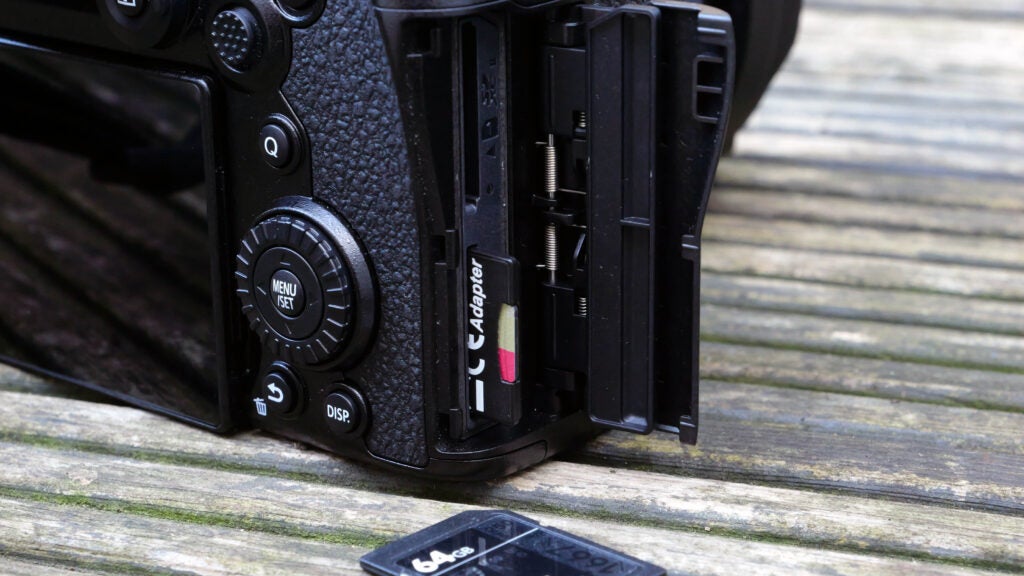
The S5II is a real treat for videographers, with so many options on offer that they likely won’t know where to start. Almost all recording resolutions and frame rates (these range from 6K at 30fps to Full HD at 180fps, and include the crucial 4K at 60fps sweet spot) are available in 10-bit quality, and a dual native ISO of 640 and 4000 means that performance can be easily adjusted to the current lighting conditions.


H.264 and H.265 codecs are available (the latter being extremely efficient and allowing for more footage to be squeezed into smaller file sizes), as well as a wide range of picture profiles including V-Log, V-Gamut, HLG and standard. When shooting in V-Log, the camera is able to capture over 14 stops of dynamic range.
Users can take advantage of the Real-Time LUT feature, a new addition that allows user-created LUT files to be applied to footage in-camera – ideal for previewing the look of your footage in the field.
I shot the majority of my test footage at 4K resolution, 4:2:2 quality and 24 or 60fps, using V-Log before colour grading and correcting in DaVinci Resolve 18. I think these quickly knocked-together results look gorgeous, and in the hands of a skilled videographer, things can look truly professional.

Another advantage added to this camera is the ability to shoot using the entire sensor area, which means easier cropping into unusual aspect ratios such as 1:1 or 9:16 in post-production. All in all, it’s a powerful tool for videographers and filmmakers.
It’s also very impressive for still photography, with its 24.2-megapixel JPEG images exhibiting sharp detail and clean colours. Shots can also be captured in RAW and processed separately for more user-influenced final results.


Latest deals
Should you buy it?
You want a powerful full-frame all-rounder: This camera can turn its hand to almost anything, from pro-level video to great photos.
You want to shoot ProRes footage: Panasonic’s GH6 shoots ProRes, but the larger sensor size means it’s off-limits here.
Final Thoughts
The Panasonic Lumix S5II is one of the best cameras you can buy and a major upgrade over its predecessor. While not quite the perfect all-rounder (I would like front and back tally lamps for starters), it’s hard to think of a more complete full-frame model at this price point.
It’s excellent for video, almost as good for still photography and built to last. A great step-up model for demanding content creators.
How we test
We test every camera we review thoroughly. We use set tests to compare features properly and we use it as our main device over the review period. We’ll always tell you what we find and we never, ever, accept money to review a product.
Used the camera for several weeks
Tested both the video and image modes
Took the camera out in the evening to test its low light performance
FAQs
Full specs
The post Panasonic Lumix S5II appeared first on Trusted Reviews.
Author: Sam Kieldsen
This article comes from Trusted Reviews and can be read on the original site.
